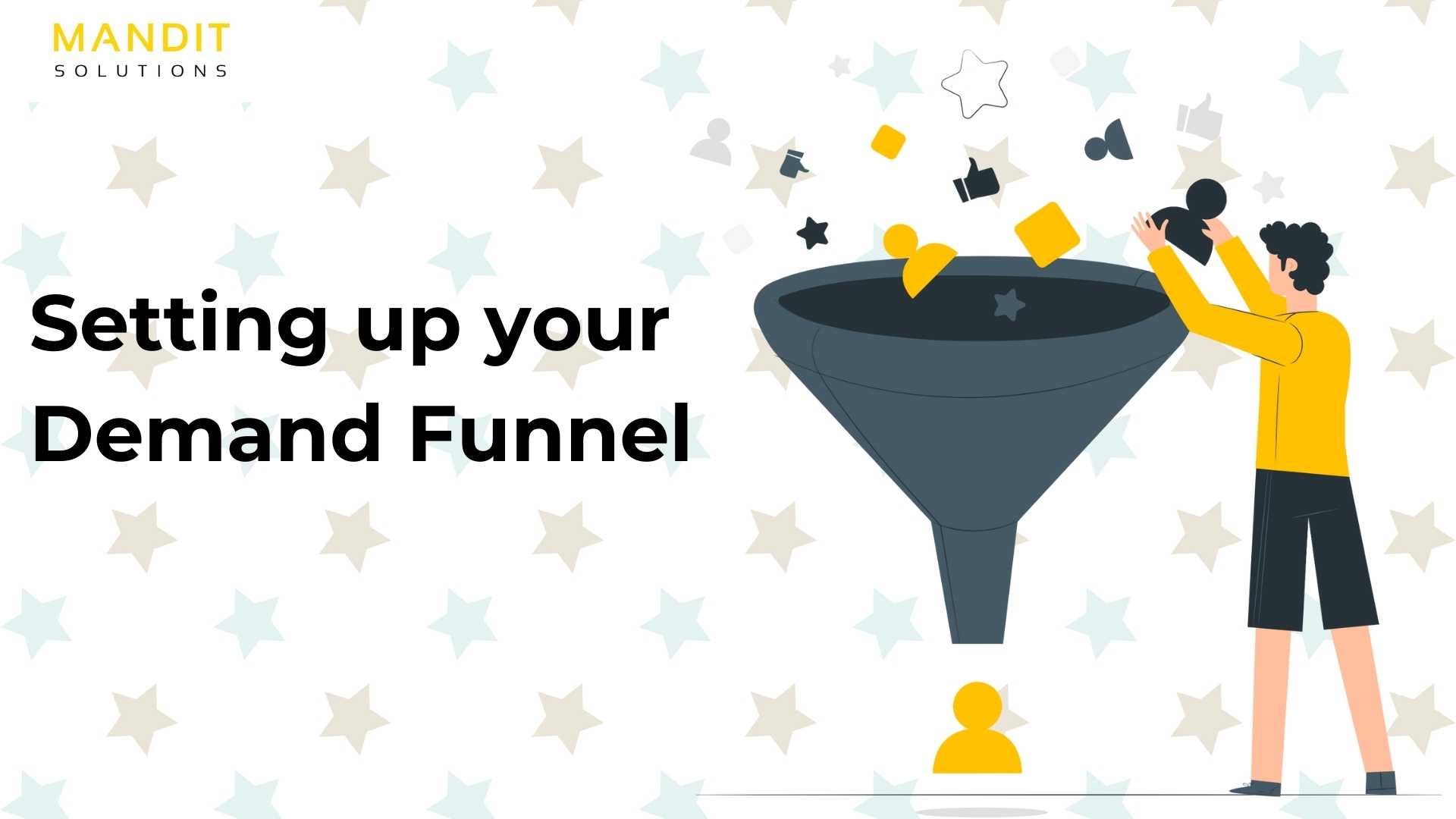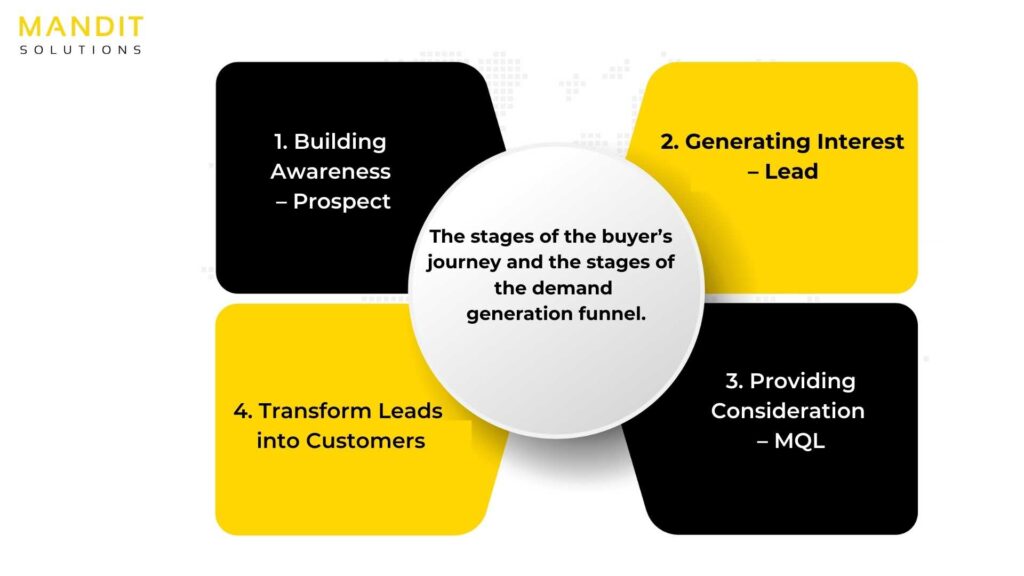
To qualify and nurture potential customers, you must first have an initial interaction with them. It means ensuring that each lead is funneled through from their first click to their 50th click and that the entire process is seamless. It bridges the chasm between sales and marketing by integrating both into a single workflow.
Defining and developing all stages of the demand funnel is the first step in creating a comprehensive model for future marketing and sales activities. It is important to have a well-functioning demand funnel that eliminates the possibility of wasted effort and reduces the friction between marketing and sales departments. When it comes to setting up a demand funnel, a thorough process from click to close is required.
In order to entice someone to purchase your product or service, you must first understand their requirements. Would you serve cheese to someone who is lactose intolerant? Not. You’d do better to go after someone who enjoys cheese, if not loves it. Getting to know your potential customer is essential before making a sales pitch.
Buyer personas provide you with a thorough picture of your ideal client. Make up a character that fits the profile of someone who would want to buy your product. Start creating an exact copy of your customer by consulting with your sales and marketing team. Prior to joining the funnel, having a persona in place makes the buyer’s journey more efficient.
With that information in hand, you can begin to plan out your content strategy. Create demand for your product or service by delivering the right content to the right audience at the right time. All throughout the buyer’s journey, utilize your buyer persona to improve your demand generation.

The top of the funnel also called the “awareness” stage, is where you let prospects know you exist. Your potential customers have troubles, but they don’t know what you can do to help. You have to find these potential customers and let them know that their issues can be resolved.
At this point, you need to get people interested in your product or service by teaching them about the solution instead of selling them your product. This can be done with quizzes, calculators, tests, ebooks, and emails, which are all types of interactive content. Your content should focus on showing what your company stands for and giving as much value as possible right away.
Now that you’ve told everyone you exist, it’s time to make them like you. Even though your prospects want their questions to be answered, it’s up to you to do it. Here’s where getting people interested comes in.
At this point, the prospects will ask you and your business questions. You need to get in there quickly and clear up their doubts. And no, you can’t be a salesperson. If your emails, blogs, and social media are good and full of useful information, they will do the job for you.
These marketing qualified leads (MQL) are going to be curious about you right now because this is the time when they are. They want individualized recommendations. In addition, you need to convince them of the benefits of working with you without focusing on your own strengths.
A return on investment calculator can be utilized, and they are not difficult to use and add value. In addition, the interactive nature of this content is how we determine which leads are the most qualified, which in turn makes the process of lead segmentation a lot more effective.
This is the most enjoyable stage. The most obvious reason for this is that you are beginning to see the fruits of your labor. Finally, your leads have converted into paying customers. At this stage in the process, it is essential to generate demand in order to prevent the customer from losing interest in your product. Maintaining coherence with your value proposition is the strategy to employ in this situation. Check to see that your product or service actually helps them get better.
In addition, one of the most effective strategies for retaining customers is to solicit feedback from those customers regarding the quality of the service that you provide.
Understanding the steps that need to be taken to make the journey go smoothly is equally as important as having a solid grasp of the buyer’s journey, which is of course extremely vital.
You need to have a clear idea of what it is that you want to accomplish. You need to have a clear idea of the action that you want the prospect to take. Therefore, you should establish goals for the marketing timeframe that are based on the conditions of the marketing. Make an effort to avoid being too general when stating these goals. Having specific goals will assist you in better understanding your progress. Consequently, the process of creating demand begins with the formulation of your plan of action by establishing objectives.
Yes, we are aware that we have already explained the benefits of developing a persona to you. However, because it is such an important step, it makes perfect sense to go over it once more. It is essential to identify the appropriate target audience for your marketing campaigns in order to maintain the maximum possible width of the base of the funnel. It is only when you have properly targeted your audience that it will result in leads, which you can then cultivate and eventually turn into customers.
If the people in your audience are interested in buying snacks, which would you rather give them: detergent or snacks? The first option. In a similar vein, you should provide the content that your audience is looking for. Make use of your content to respond to their inquiries. Provide them with value in the here and now.
If you are not offering the content on the appropriate platform, it defeats the purpose of providing it in the first place. It is necessary for you to choose the appropriate channels for disseminating your content. Email is a strategy that might work for some people, but for others, social media is a game-changer. You are now in a position to select one option from among the many that are available. Make the best possible decision, friend. It is significant!
Keep in mind that different kinds of platforms may be appropriate for different parts of the sales funnel.
You need to keep a record of what is successful and what aspects need to be improved. The process of creating demand includes an essential step consisting of conducting performance evaluations. There are many different metrics that can be used to evaluate how successful a demand generation campaign has been. Some examples of these metrics include traffic, engagement, and feedback.
Follow the success metrics that are provided in this blog post in order to evaluate how well your process of demand generation is working.
You can make use of a template that contains three stages or more. A model consisting of the awareness, consideration, and decision stages is frequently used as the foundation for a marketing map or funnel, but you are free to use a more complex model.
It is important to conduct market research to get a better idea of what the typical buyer’s journey looks like for your target audience. This will allow you to adopt a model that is appropriate for both your business and the audience you are trying to reach.
Expand your demand generation funnel with our proven strategies, turning interest into action.
Copyright © 2024 Mandit Solutions Private Limited
| Cookie | Duration | Description |
|---|---|---|
| cookielawinfo-checkbox-analytics | 11 months | This cookie is set by GDPR Cookie Consent plugin. The cookie is used to store the user consent for the cookies in the category "Analytics". |
| cookielawinfo-checkbox-functional | 11 months | The cookie is set by GDPR cookie consent to record the user consent for the cookies in the category "Functional". |
| cookielawinfo-checkbox-necessary | 11 months | This cookie is set by GDPR Cookie Consent plugin. The cookies is used to store the user consent for the cookies in the category "Necessary". |
| cookielawinfo-checkbox-others | 11 months | This cookie is set by GDPR Cookie Consent plugin. The cookie is used to store the user consent for the cookies in the category "Other. |
| cookielawinfo-checkbox-performance | 11 months | This cookie is set by GDPR Cookie Consent plugin. The cookie is used to store the user consent for the cookies in the category "Performance". |
| viewed_cookie_policy | 11 months | The cookie is set by the GDPR Cookie Consent plugin and is used to store whether or not user has consented to the use of cookies. It does not store any personal data. |